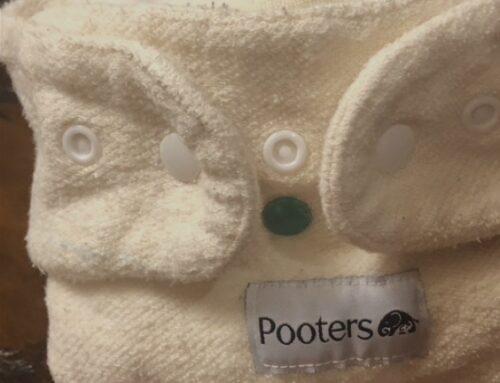Wool diaper covers are popular for good reason: they’re breathable, natural, antibacterial, and protect well against leaks. Felting wool is something that can be done to help make them even more leak-proof. Learn here how to felt a wool diaper cover by hand.
Do I Have to Felt My Covers?
In short, no.
The purpose of felting wool is to tighten the fibers in the wet zone of the diaper to help make it more leak-proof.
Wool will felt on its own over time as it gets used. For that reason, many people will never do any sort of hand-felting. If the extra steps involved with this process turn you off, know that this is purely optional.
Some choose to do it to help their wool be even more effective right off the bat. In the video below, I am doing a slight hand felting on the wet zone of my brand new newborn Disana cover. Newborns are less mobile than other babies, so that may slow down the natural felting process which is why I chose to do hand felting. Normally I would just let it take it’s own course because I like to keep things low-maintenance.
How to Hand Felt Wool Covers
Steps to Hand-Felting
If you’d rather not watch the video or just need a recap, here are the steps to hand felting a diaper cover:
- Fill a sink, bucket, or bowl with some tepid water.
- Mix in your wool soap. I like Eucalan (affiliate link) because it is a nice, gentle no-rinse soap that contains a little lanolin for boosting the function of the diaper cover with each wash (lanolin, a natural substance found in wool, also keeps the cover from leaking).
- Soak your cover.
- Begin to rub the “wet zone”, ie the crotch area. You do not need to rub the whole cover- in fact, you shouldn’t. You want the waist and legs to remain stretchy. Focus just on the areas that will get the most moisture.
- Gently fold and press the water out of the cover. Do not wring (it will stretch your wool out).
- Lay flat to dry– may take 24 hours to completely dry.
Do You Need to Lanolize?
Lanolizing a wool cover involves melting a little lanolin with your wool soap in some hot water (can put in a jar or Tupperware and shake it to mix) and adding to your bowl/sink of tepid water. You can soak your cover for 15 minutes, and then proceed with hand-felting.
You do not usually need to lanolize a brand new wool cover, but many people like to just to be on the safe side. You can test whether or not it’s needed by pouring a little bit of water on the outside of the cover. If it beads up without penetrating, you don’t need to lanolize. If it soaks right through, then it would be a good idea.
You also should not need to lanolize your cover every single time you wash it. For more information on wool care, check out Green Mountain Diaper’s wool care page.
Conclusion
Hand-felting can get your wool working at top capacity sooner than waiting for it to felt on its own, but it is not necessary. It isn’t hard to hand-felt your diaper covers at all, so many people will choose to do it because…why not? However, if you are a patient person that doesn’t want to go to the extra trouble, you can allow it to naturally felt as your baby wears it. Just know that they may not be as leak-proof until the felting happens.
Have you hand-felted your wool covers before? Any tips? Share them here!




Leave A Comment